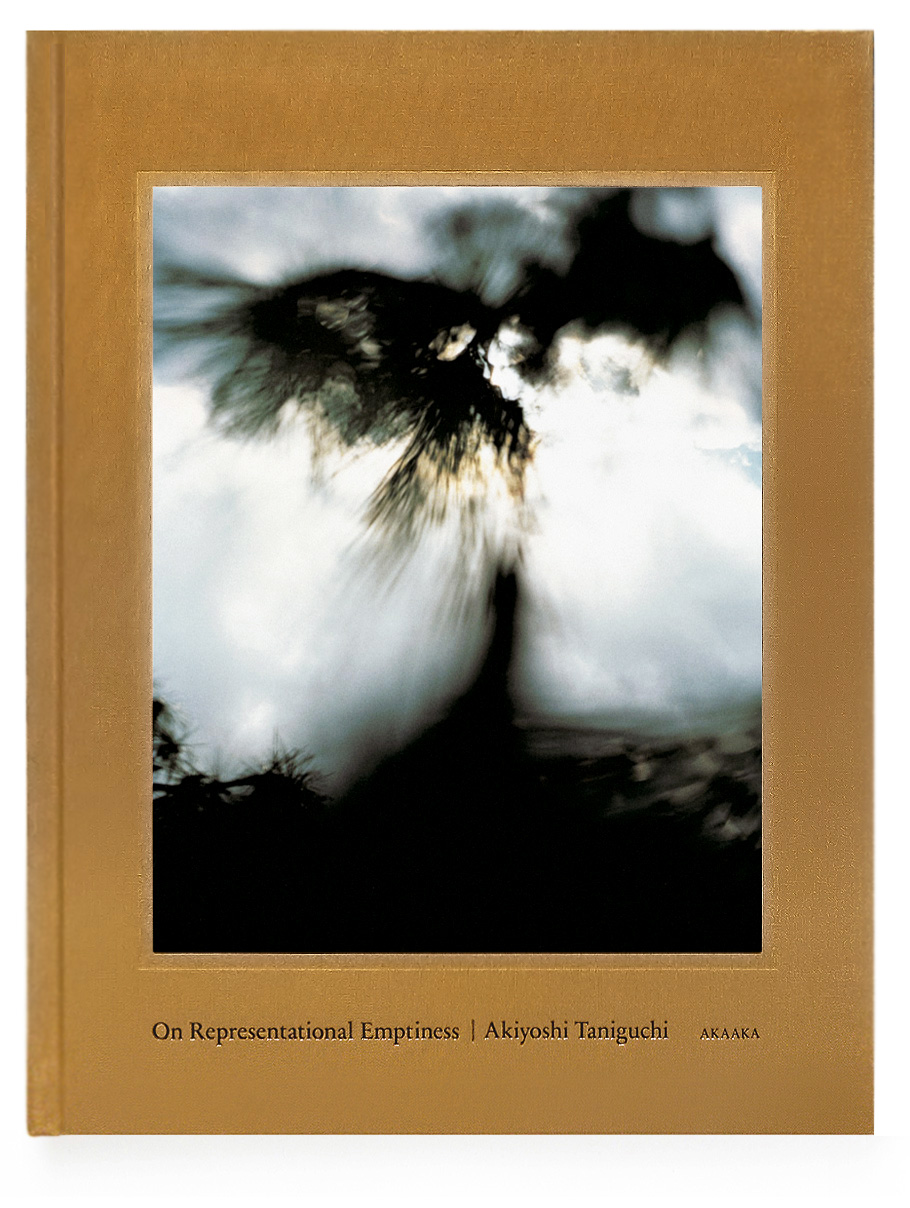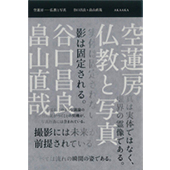
谷口昌良『空を掴め ── 空像へ』
Book Design:木村稔将 Editor: Yutaka Kikutake Gallery Books 発行:赤々舎 Size: H288mm × W220mm Page:100 pages Binding:Cloth hardcover Published in May 2023 ISBN:978-4-86541-170-6 |
¥ 3,500+tax
国内送料無料! お支払い方法は、銀行振込、郵便振替、 クレジットカード支払い、PayPal、PayPay よりお選び頂けます。 |
|---|
About Book
「 空像 」(「無常像」)としての写真のありよう
011 私は眼鏡を外した 027 私は解放された 053 私は陶酔した 083 松の表皮のピクセルが愛おしく 090 そして写真は燃えて無くなった 092 くう空を焦がす | 港千尋 [別紙] ピクセルは嘘をついた 伊藤雅浩による表象化 (アルゴリズムによる生成化) 「Human Error について」 写真の灰は涙壺となった 多和田有希によるあらたな物化(灰による陶器) 「写真の灰による物化について」 修行としての写真 / 仏僧写真家の思い |
011 I took off my glasses 027 I became free 053 I became intoxicated 083 The charming pixels of pine bark 090 And then the photo burned away 092 Burning the KU [Attached document] The lies of the pixels A Representation by Masahiro Ito (Algorithmic Generation) "On Human Error"s The ashes of the photograph became a jar of tears A new Materialization by Yuki Tawada (Pottery made of ash) "On the Materialization of Photographs using Ashes" Afterword |
On Representational Emptiness
Akiyoshi Taniguchi
Kusho 空象 is a neologism coined by me made up of the characters 空 which in the Buddhist context connotes Emptiness, and 象 meaning form; shape; phenomenon. Joined together, the two-character compound means that all representations are Empty. Representations that are recognized to be "seen" or objects that are "seen things" are merely recognized by the mind as such and are not real images nor substantive. Photographs are entrusted with substance and discussed in such a manner but are in actuality, nothing more than mere virtual images. However, many of today's photographic works are overconfident in their materiality. If one hundred people see one apple, it becomes one hundred apples.
I am farsighted, and I took off my glasses and immersed myself in a blurry world to take pictures. Of course, using manual focus, I didn't know if the shot was in focus. Reflected on my retina was the scenery that only I could see, and so I tried pressing the shutter relying on my own five senses. I didn't know what I was shooting or what kind of details I saw, and yet, it felt good. When I look at the finished print at a later date, printed was "something reminiscent" of that reflection on the retina. But while that is the fact captured by the photograph, the question of what was taken is a stupid question. Such floating substances are understood in Buddhist philosophy as Impermanence. In other words, permanent substances do not exist at all.
One of the photographs in this has its appearance changed due to the human error of digital technology. The print burns as the paper (substance) turns into ash, and transforms into a jar of tears.
The main message of this series is: "representation is impermanence."
We can probably see from this analogy that everything is impermanent.
In particular, I wonder if artists continue to seek to go towards the truth that they cannot possibly grasp and therefore merely grasp Emptiness.
The representations captured by Joseph Nicéphore Niépce have a certain naiveite when taking into account the 200-year-old history of the modern technology of photography, but the wonderment born out of that naiveite is important for me. I took on this challenge with a similar perspective close to my heart. Wonderment that something has become captured in a photograph.
As the analog versus digital debate becomes less intense and with the camera industry moving forward in the trajectory that it is, perhaps it is worth reconsidering what is being accepted as a technological breakthrough. This is because with the advent of digital expression that is ever-changing the value of straight photography has been lost to the history of photography. It is at this moment that reached the end point of one "definition of photography."
I now am reminded of a major milestone in the history of photography, which began with Niépce's wonderment. And if Niépce had a digital camera today, how would he feel?
However, if Representation is Impermanence, then the aforementioned controversy may not be such a big one after all. Rather, photography will continue to expand beyond its boundaries into other mediums. At times it is a little sad that straight photography as it was in the past is being dismantled but then I remind myself that within the destiny of representation and synbolism is the expression of the persistence of the human spirit. And in this era of crossings and turning points I find myself seeking a return to Light.
Excerpts from the Afterword "Towards Kusho: Representational Emptiness" by Akiyoshi Taniguchi
Artist Information
谷口昌良(たにぐち・あきよし)
長応院住職、空蓮房房主及び写真家。1960年東京生まれ。寺に生まれ育ち、祖父の本堂での暗室作業の手伝いから写真を学ぶ。高校卒業後10年間在米、NYにて美術、写真をレオルビンファインに学び、LAにて北米開教使として従事。帰国後住職拝命、空蓮房ギャラリー建立。著作に『写真少年』3部作、『空を掴め I 』(石田瑞穂共著/空蓮房・YKG Publishing刊)『空蓮房 ─ 仏教と写真 ─』(畠山直哉 共著/赤々舎刊)などがある。個展、グループ展多数。作品はSFMOMA, Denver Art Museumにコレクションされている。
Masayoshi Taniguchi
Born in Tokyo in 1960, he grew up in a temple, assisting his grandfather with darkroom work. After graduating from high school, he spent ten years in the U.S, and studying art and photography under Leo Rubin Fine in New York After that, and He worked as a missionary in North America based in Los Angeles.
Upon returning to Japan in 1988, Currently serving as a priest, and he established a space "KURENBOH" Gallery, a part of the Chohouin Buddhist Temple of Kuramae, Tokyo in 2006, and has also organized exhibitions, events etc.
His works include "Shashin Boy" trilogy, "Kurenbou - Buddhism and Photography" (co-authored with Naoya Hatakeyama, published by AKAAKA).
He has held many solo and group exhibitions. His works are part of the collections at SFMOMA and the Denver Art Museum.
Related Items
|
谷口昌良・畠山直哉 |
|---|








